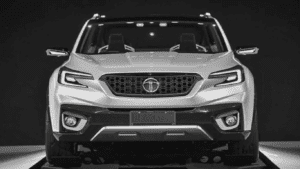Introduction
The automotive world saw a major shake-up in 2021 with the merger of PSA Group and Fiat Chrysler Automobiles (FCA) to form Stellantis, now the world’s fourth-largest automaker by volume. Stellantis is more than just a combination of two giants; it’s a diverse portfolio of car brands that represent innovation, heritage, and a forward-thinking approach to the future of mobility.
In this post, we’ll dive deep into all Stellantis car brands, their history, and their unique contributions to the global automotive landscape. Whether you’re an enthusiast seeking a complete understanding of the brands under Stellantis or a consumer researching which one fits your needs, this guide offers insightful, well-researched information to help you navigate the Stellantis universe.
1. What is Stellantis?
Stellantis was officially formed on January 16, 2021, as a result of a 50-50 merger between PSA Group (Peugeot, Citroën) and Fiat Chrysler Automobiles (FCA). This merger was aimed at combining resources to strengthen their global presence, streamline operations, and accelerate innovation, particularly in electrification and mobility services.
With its headquarters in Amsterdam, Stellantis is led by CEO Carlos Tavares and is traded on multiple stock exchanges, including the New York Stock Exchange (NYSE), Euronext Paris, and Borsa Italiana in Milan. Stellantis controls 14 car brands spread across various market segments, from affordable compact cars to luxury automobiles and commercial vehicles.
2. A Breakdown of Stellantis Car Brands
Stellantis owns 14 car brands, each with its own unique history, customer base, and market positioning. Here’s an in-depth look at each brand and its offerings:
a. Abarth
Overview:
Abarth is an Italian brand that specializes in small, high-performance cars. It’s synonymous with Fiat but serves as its performance division. Known for creating sporty versions of the Fiat 500, Abarth cars are designed for drivers who enjoy an aggressive driving experience.
History:
Founded in 1949 by Carlo Abarth, the brand became famous for building racing cars and tuning kits.
Popular Models:
Abarth 595, Abarth 695.
Market Position:
Sports-focused, targeting enthusiasts who want affordability paired with fun driving dynamics.
b. Alfa Romeo
Overview:
Alfa Romeo is an Italian luxury car manufacturer known for its emphasis on driving pleasure, sleek design, and engineering prowess. It appeals to those who seek the allure of Italian craftsmanship coupled with advanced technology.
History:
Founded in 1910, Alfa Romeo has a rich heritage in motorsport, which is reflected in the performance and styling of its modern vehicles.
Popular Models:
Alfa Romeo Giulia, Stelvio.
Market Position:
Positioned in the luxury sports car segment, competing with brands like BMW and Mercedes-Benz.
c. Chrysler
Overview:
Chrysler is one of the oldest American car manufacturers, focusing primarily on mainstream vehicles with a blend of performance and luxury.
History:
Founded in 1925, Chrysler has been a cornerstone of the American auto industry, producing iconic models like the Chrysler 300.
Popular Models:
Chrysler Pacifica, Chrysler 300.
Market Position:
Chrysler targets the mid-range luxury market, with its minivan (Pacifica) also carving a niche in the family-oriented segment.
d. Citroën
Overview:
Citroën is a French automaker known for its quirky designs, comfort-focused engineering, and commitment to innovation.
History:
Founded in 1919 by André Citroën, the brand has a history of producing cars with revolutionary technologies, including the Traction Avant, the first mass-produced front-wheel-drive car.
Popular Models:
Citroën C3, C5 Aircross.
Market Position:
Citroën focuses on comfort, affordability, and practicality, offering cars that cater to families and daily drivers.
e. Dodge
Overview:
Dodge is an American brand synonymous with muscle cars and high-performance vehicles. Known for its aggressive styling and powerful engines, it appeals to performance enthusiasts.
History:
Founded in 1900 by the Dodge brothers, the brand originally made automotive parts but quickly moved into vehicle manufacturing, gaining a reputation for producing robust cars and trucks.
Popular Models:
Dodge Charger, Challenger, Durango.
Market Position:
Dodge is a performance-focused brand that competes with Ford and Chevrolet, particularly in the muscle car segment.
3. Stellantis Brands: The Electrification Roadmap
Stellantis has made a significant commitment to electrification across its portfolio. The company plans to invest more than €30 billion by 2025 to develop electric vehicles (EVs) and hybrid models, enhancing the transition towards sustainable mobility.
Here’s how some key Stellantis brands are approaching electrification:
- Peugeot: The brand already offers several hybrid and fully electric models like the e-208 and e-2008.
- Fiat: Fiat introduced the all-electric Fiat 500 in 2020, marking its foray into EVs.
- Jeep: Jeep is pushing hard into the hybrid and electric space with the introduction of the Wrangler 4xe, a plug-in hybrid, and aims to electrify its entire lineup by 2025.
- Opel/Vauxhall: The brands are offering a range of EVs and hybrids, with models like the Mokka-e and Corsa-e.
- Maserati: Known for its luxurious sports cars, Maserati will launch its first fully electric car, the GranTurismo Folgore, as part of its plan to electrify its lineup by 2025.
4. Stellantis’ Global Reach
Stellantis operates in over 130 countries and has manufacturing facilities across the globe. Its diverse product range allows it to cater to different markets, from the high-demand American and European markets to emerging markets in Asia and South America.
- North America: Stellantis’ strong presence in the U.S. and Canada comes primarily through brands like Jeep, Chrysler, Dodge, and RAM.
- Europe: Peugeot, Citroën, and Opel dominate the European market, where smaller, more fuel-efficient cars are in demand.
- Latin America: Fiat is a dominant player, especially in Brazil and Argentina, where the brand is well-regarded for its affordable and durable vehicles.
5. The Future of Stellantis
The future of Stellantis hinges on its ability to innovate and adapt to the rapidly changing automotive industry. Key trends that Stellantis is focusing on include:
- Electrification: Stellantis plans to offer 39 electrified vehicles by 2025 and aims to sell only electric cars in Europe by 2030.
- Autonomous Driving: The company is working on advanced driver assistance systems (ADAS) and plans to introduce Level 3 autonomous driving capabilities in the near future.
- Sustainability: Stellantis is committed to reducing its carbon footprint, aiming for carbon neutrality by 2038.
- Mobility Solutions: Through brands like Free2Move, Stellantis is exploring car-sharing, subscription services, and other mobility solutions.
6. Stellantis in Motorsports
Stellantis also has a significant presence in motorsports. Alfa Romeo competes in Formula 1, and brands like Peugeot and Maserati participate in endurance racing and Formula E. Motorsports not only enhance the brands’ visibility but also provide valuable technological advancements that trickle down into their production cars.
Conclusion
Stellantis is a powerhouse in the global automotive industry, boasting a diverse portfolio of brands that cater to every type of consumer. From affordable and practical cars to luxurious, high-performance vehicles, Stellantis covers all bases. With a clear focus on electrification, sustainability, and future mobility solutions, the company is well-positioned to remain a major player in the automotive world for decades to come.
Whether you’re a car enthusiast or a potential buyer, understanding Stellantis’ brands and their offerings can help you make informed decisions. Keep an eye on this conglomerate as it continues to push boundaries and shape the future of the auto industry.




